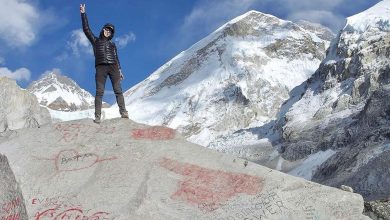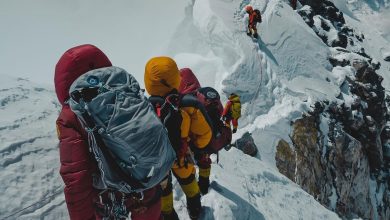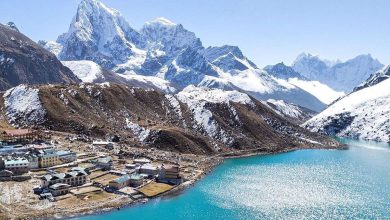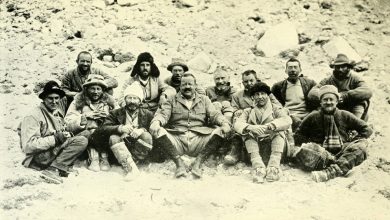Kala Patthar (5,545m): Popular Vantage Point That Offers Unobstructed Everest View
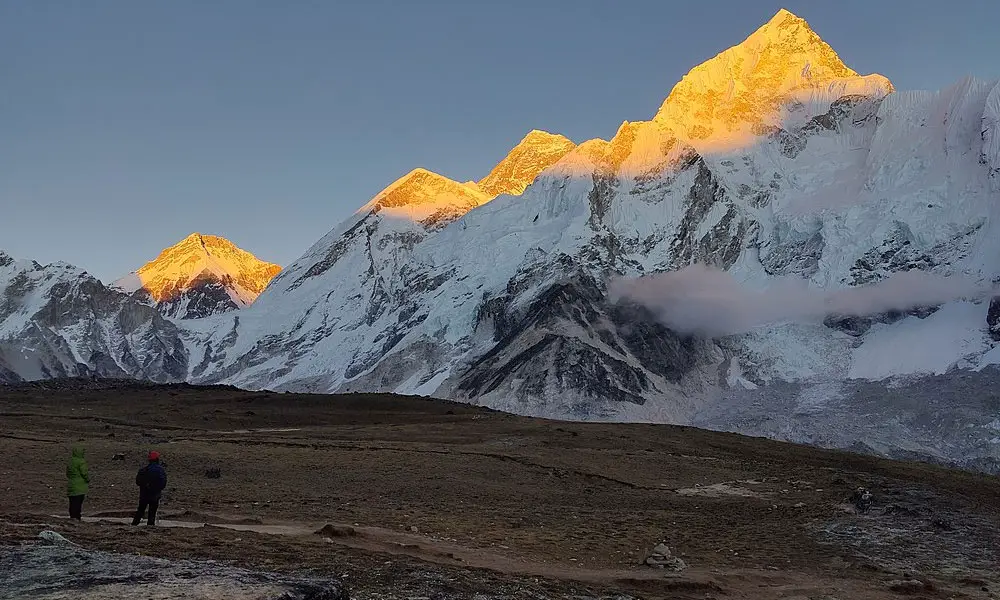
Kala Pathhar gives a great view of Mount Everest, even if you aren’t aiming to climb the mountain. This spot has been perfect for many climbers who have wished to safely come closer to Everest without actually climbing it. It is the most popular vantage point, offering the best view of the world’s tallest mountain after all! Moreover, it is also a landing place for helicopters trying to make a Mount Everest tour. Hence, the significance of this place in the hearts of mountaineers has always been prominent.
Climbing to Kala Pathhar is no joke. But, it can be done with carefulness if one really wants to make it up to the mountain viewing spot. Hiking to the spot is quite possible, but many visitors also come to Kala Pathhar with the help of a helicopter ride. There are a lot of interesting things about Kala Pathhar that might interest you. Make sure to read till the end of this article to know more!
How many mountains can you see from Kala Pathar?
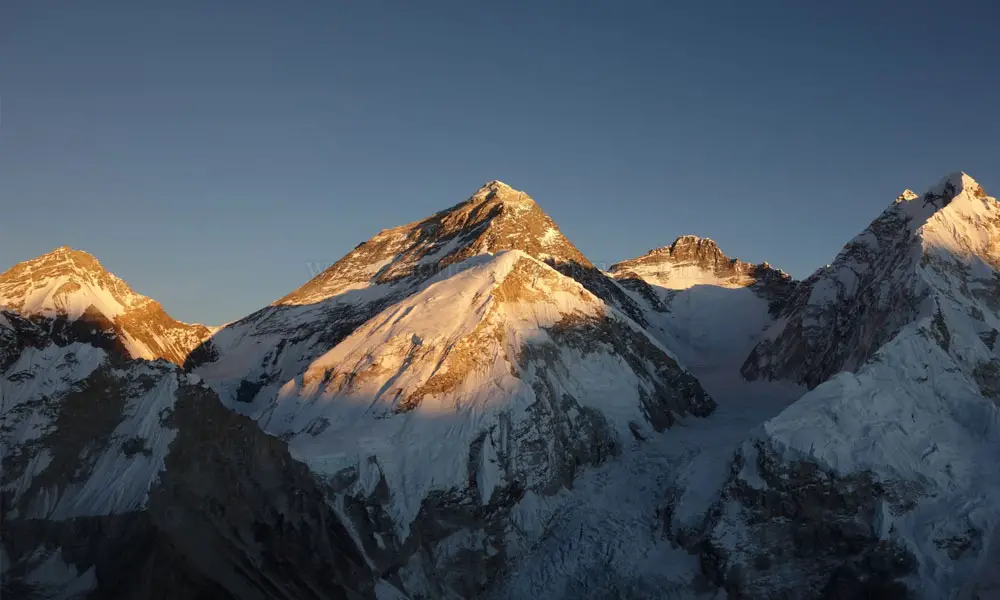
There are many mountains that can be seen from Kala Pathhar. At the height of 5,643 m / 18,373 ft, Kala Patthar is taller than four of the mountains on the seven summit. Hence, the view of mountains from this spot is simply terrific. Above the height of 8000m, you can see Mount Everest and Lhotse. Likewise, above the height of 7000m and 6000m, you can see Nuptse, Changtse, Pumori, Ama Dablam, Chumbu, Thamserku, Kangtega, Taboche, Lobuche, respectively.
While Mount Lhotse may block the Everest view to an extent when a mountaineer only crosses a certain height, it becomes possible to see the unobstructed view of the world’s tallest mountain without anything in between after crossing 4000m of Kala Patthar. The mountain spot is really an incredible one in this regard. Likewise, when one is only a few meters away from 4000m, he can only see the slightest top half of the mountain. Going beyond 4000m of Kala Pathhar almost works like magic for climbers.
How did Kala Pathhar get its name?
Kala Pathhar gets its name from the Hindi words Kala and Pathhar, meaning Black and Rock, respectively. These words have been summed up to come up with the name Kala Pathhar, which describes the place as a black rock. Though Kala Pathhar is located in Nepal and most of the inhabitants in the area of Kala Pathhar are Sherpas, the name does not come from either Sherpa or Nepali words. The reason behind the name is the presence of black rocks in the mountain.
The mountain spot was named so in the 1950s. However, it is still a mystery as to who named the place Kala Pathhar. Tilman’s 1953 book does not talk about Kala Pathhar in any way. However, you can find the mentions of the viewpoint in Harka Gurung’s book from 1980 Vignettes of Nepal.
Kala Pathar Vs. Mount Everest
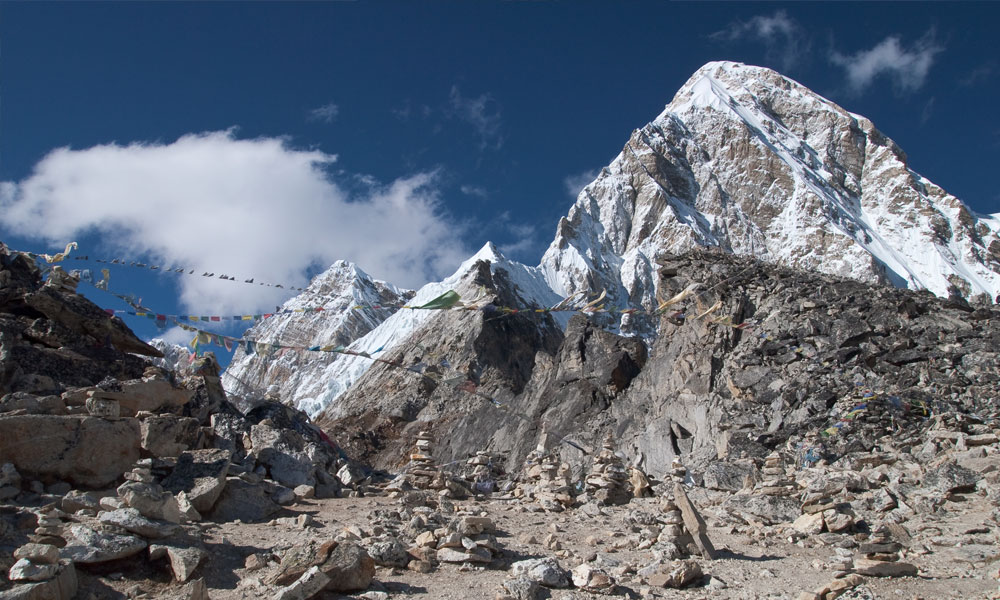
People come to Kala Pathhar for numerous reasons, one of them being to view Mount Everest. When at the viewpoint, one does not necessarily have to climb the entire mountain of Everest and can instead just get the perfect full view of the tallest peak in the world without anything disturbing the view. Hence, when at Kala Pathhar, the relishing of the absolutely panoramic scenery cannot be missed.
However, Kala Pathhar is a great place to hike. Along with the convenience factors, this viewpoint also has equal difficulties along the way as it lies above the height of 5000 meters. Hence, one can enjoy getting one of the most adventurous climbs of their life while also not fearing to get into some serious accident as does climbing Mount Everest. Similarly, if you want to take a tour of Mount Everest, you are more than likely to land in Kala Pathhar, as it is the landing spot for the Mount Everest tour. Given this fact, one is not necessarily required to take a climb to Kala Pathhar if he wants to view Mount Everest or simply go to the viewpoint without any inconveniences or climb.
Mount Everest is very close to the viewpoint. It lies at a height of 8848m, which is a little more than 3000 meters taller than Kala Pathhar. The difficulties of climbing the mountain, without a doubt, are equally high. A lot of tourists and mountain enthusiasts have been choosing to come to Kala Pathhar to view the tallest peak in the globe instead of going through the hardships of climbing it.
Best time to visit Kala Pathhar
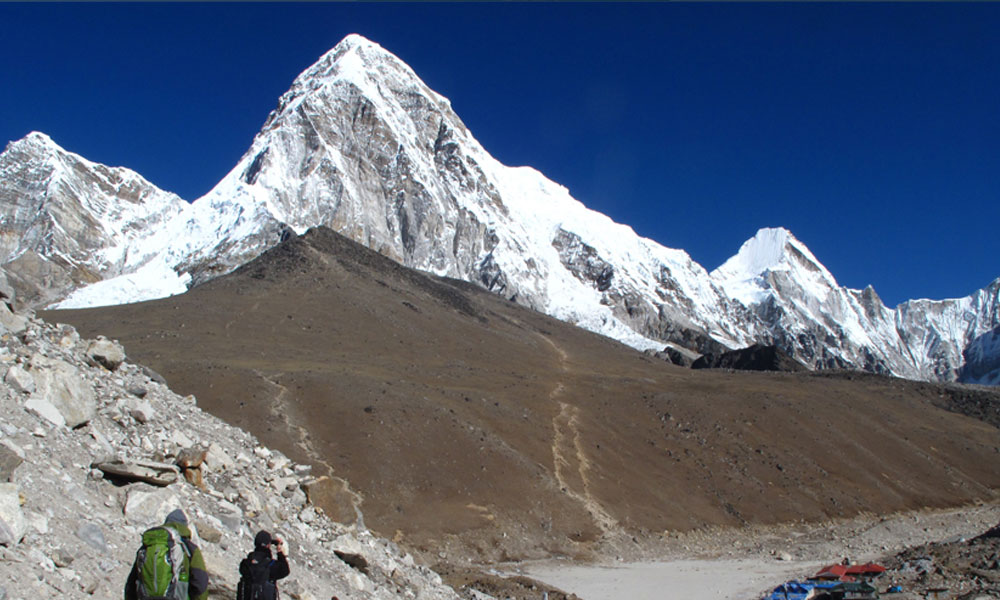
The best time to visit Kala Pathhar is from March to May and September to November. These are the peak seasons when most people visit Kala Pathhar. The clarity in the sky, the weather conditions, precipitation, and the season is quite favorable. And the difficulties of being at such a top point are also low when one comes here during these seasons. However, one can choose when he wants to come to the viewpoint as per his preference.
During the summer, there is an equal chance of rain. Hence, spring is possibly the most favorable season to come if you really want the weather to be a little sunny and warm. Likewise, the winter temperature in the Kala Pathhar area can go below -10 degrees Celsius, which might lead to several health hazards and difficulties. Hence, choosing to go there during the fall or autumn is much preferable and wise in comparison to winter. Autumn is simply better as the air is not yet so cold. Still, it has a hint of chill.
What are the hazards at Kala Pathhar?
With a rugged location like Kala Pathhar, it is obvious that people go through hazards. Though the viewpoint not being as close to difficult as Mount Everest, there is still a fair amount of danger associated with the location. Some of the hazards of Kala Pathhar are;
1. Sunburn
Since Kala Pathhar is quite close to the sun due to its height, it is likely for people to get sunburnt easily. Summers are the wildest when it comes to getting sunburnt. Similarly, other seasons aren’t quite favorable when it comes to avoiding sunburns. You need to put on a generous amount of UV protection lotion or sunscreen when you are here. Wearing protective pieces of clothes just adds up to the benefits of protecting oneself from close exposure to the sun. Sunburn is possibly one of the top hazards of going to Kala Pathhar, regardless of how you reach there.
2. Altitude sickness
One really can’t avoid getting sick when a certain altitude is crossed. Given the fact that Kala Pathhar lies at the height that is above the heights of four summits out of seven summits in the world, it is easy to come up with the fact that one, indeed, suffers from altitude sickness and even some respiratory issues, including hypothermia and Bronchial irritation at Kala Pathhar. It is always wise to bring along oxygen cylinders if you want to avoid altitude sickness at Kala Pathhar.
3. Injuries
It is not always possible to avoid dangers and injuries regardless of plentiful caution at a place like Kala Pathhar. Hence, injuries are very common when one is at this viewpoint.
How can I get to Kala Patthar?

Getting to Kala Pathhar may seem difficult, but one must only know the best routes and roads to take. Start your journey with a flight from Kathmandu to Lukla, or you can simply book a helicopter to Kala Pathhar from Kathmandu to Kala Pathhar or Lukla to Kala Pathhar. If you decide to walk from Lukla to Kala Pathhar, you will have to hike for 8 days to Gorakhstep, the closest place to Kala Pathhar.
Frequently Asked Questions
Can you see Mt Everest from Kala Patthar?
Yes, you can see Mt Everest from Kala Pathhar.
Which is better, Kalapathar or zero point?
Kalapathhar is better in terms of snow and traffic.
Why is it called Kala Patthar?
It is called Kala Pathhar because of the black rocks or cliffs and snowy peaks.
How high is Kalapathhar Nepal?
Kala Pathhar in Nepal is 5545m high.
What is the oxygen level at Kala Pathhar?
The oxygen level at Kala Pathhar is less than 50%.
Also, read;
